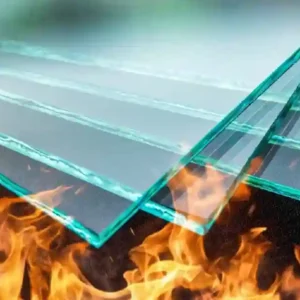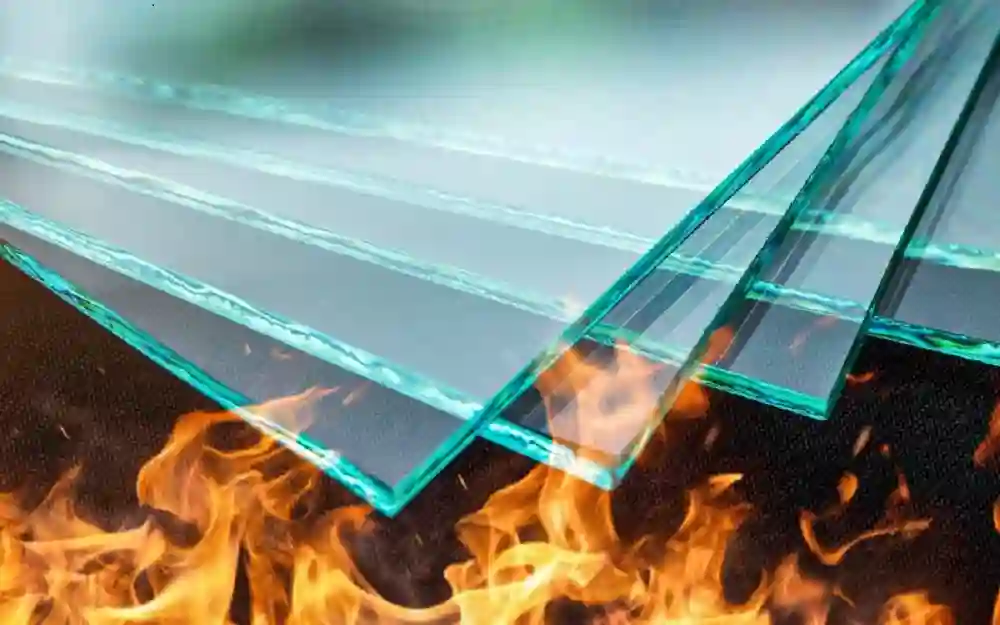

Fire-resistant glass is an essential element in modern architecture and safety design, offering protection against the spread of flames and smoke while allowing for natural light and aesthetic appeal. This comprehensive guide explores the types, benefits, applications, and design considerations of fire-resistant glass, highlighting its crucial role in enhancing safety in buildings.
Understanding Fire-Resistant Glass
Fire-resistant glass is engineered to withstand high temperatures and resist the passage of flames and smoke for a specified duration. Unlike standard glass, which can shatter under extreme heat, fire-resistant glass is designed to remain intact, providing a barrier between fire-affected areas and escape routes.
Types of Fire-Resistant Glass
- Wired Glass: This type of glass contains a mesh of wire embedded within it. The wire helps maintain the integrity of the glass during a fire, preventing it from shattering and allowing it to withstand temperatures of up to 1,200°F (649°C). However, wired glass is often limited in terms of aesthetics and clarity.
- Ceramic Glass: Known for its excellent thermal resistance, ceramic glass can withstand higher temperatures than wired glass, typically up to 1,832°F (1,000°C). It offers superior optical clarity and is often used in fire-rated doors and windows.
- Intumescent Glass: This type of glass features a special interlayer that expands when exposed to heat, forming an insulating barrier that prevents the passage of heat and smoke. Intumescent glass can achieve high fire ratings while maintaining transparency, making it a popular choice for contemporary designs.
- Laminated Glass: Laminated fire-resistant glass consists of multiple layers of glass and a fire-rated interlayer. This construction provides enhanced strength and sound insulation while offering fire resistance.
Benefits of Fire-Resistant Glass
- Safety: The primary benefit of fire-resistant glass is its ability to enhance safety by slowing the spread of fire and smoke. This feature is critical in commercial and residential buildings, providing occupants with more time to evacuate.
- Aesthetic Appeal: Fire-resistant glass is available in various styles and finishes, allowing architects and designers to incorporate it seamlessly into their projects without compromising aesthetics.
- Natural Light: Unlike solid fire-rated walls, fire-resistant glass allows for natural light to flow through spaces, creating a more pleasant and inviting environment.
- Energy Efficiency: Some fire-resistant glass products also provide energy efficiency benefits, helping to regulate indoor temperatures and reduce energy costs.
- Design Flexibility: With advancements in technology, fire-resistant glass is now available in various thicknesses, tints, and textures, allowing for creative architectural designs while meeting safety standards.
Applications of Fire-Resistant Glass
Fire resistant glassis used in various settings, including:
- Commercial Buildings: In office buildings, shopping centers, and hospitals, fire-resistant glass can be used in windows, doors, and partitions to create safe, open spaces while adhering to fire safety regulations.
- Residential Homes: Fire-resistant glass can be incorporated into homes, particularly in areas close to potential fire hazards, such as kitchens or garages.
- Public Spaces: Schools, airports, and government buildings often use fire-resistant glass to ensure the safety of large groups of people in case of an emergency.
- Industrial Applications: Factories and warehouses utilize fire-resistant glass to separate different operational areas while maintaining visibility and safety.
Design Considerations for Fire-Resistant Glass
When selecting fire-resistant glass for a project, several design considerations should be taken into account:
1. Fire Rating Requirements
Different applications have varying fire rating requirements based on local building codes. It’s crucial to understand these regulations and select glass that meets or exceeds the required fire resistance.
2. Thermal Performance
In addition to fire resistance, thermal performance is essential for energy efficiency. Consider selecting fire-resistant glass that offers insulation properties to enhance the overall energy performance of the building.
3. Aesthetics and Functionality
Fire-resistant glass is available in many styles and finishes. It’s important to choose a product that complements the overall design vision while meeting safety standards.
4. Installation and Maintenance
Proper installation is vital for ensuring the effectiveness of fire-resistant glass. Collaborate with qualified professionals to ensure compliance with safety standards. Regular maintenance checks are also essential to assess the integrity of the glass and surrounding structures.
Conclusion
Fire-resistant glass plays a critical role in enhancing safety and design in modern architecture. By providing protection against fire while allowing for natural light and aesthetic appeal, it meets the diverse needs of contemporary buildings. Understanding the various types, benefits, applications, and design considerations of fire-resistant glass can help architects, builders, and property owners make informed decisions that prioritize safety without sacrificing design integrity. As technology advances, the options for fire-resistant glass continue to expand, promising even greater safety and aesthetic flexibility for future building projects.